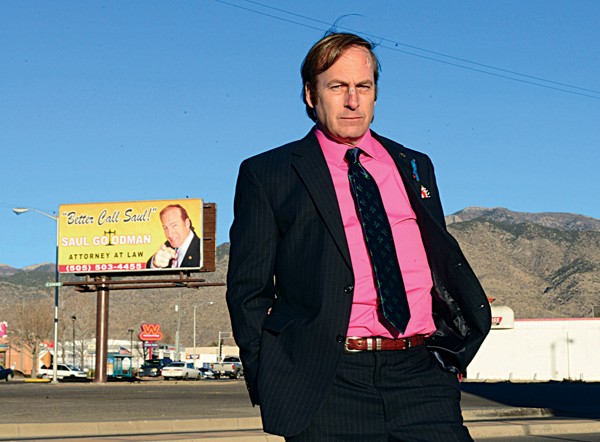You don’t need to know much about Breaking Bad to enjoy Better Call Saul, AMC’s new spinoff series.
I know this because I like what I’ve seen of Better Call Saul even though I’ve never seen a full episode of Breaking Bad. (Oops.) Aside from a handful of random scenes and some unavoidable background knowledge about the Walter White story, I don’t know what I’m supposed to know. But I also don’t know what to expect, and that’s a refreshing way to approach a budding pop culture phenomenon. But perhaps my ignorance is strength. I can experience Better Call Saul without hunting for Easter eggs or suffering from those involuntary “the book was better”-type comparisons.

Bob Odenkirk stars in Better Call Saul
Three episodes in, Better Call Saul resembles Breaking Bad in that it’s a crisply plotted, unexpectedly humorous and potentially grim story about a man who’s lost at sea and sailing into darkness, because it’s either that or abandon ship. This time, though, shady lawyer Jimmy McGill (Bob Odenkirk) is on deck. But he’s been both literally and figuratively pushed around by so many people so far that it’s more accurate to say he’s lashed to the mast instead of at the helm. Jimmy, of course, later becomes the ambulance-chasing attorney Saul Goodman that gives the show its title; its central mystery is when and how that rebirth occurs.
Some clues have already emerged. Each episode has opened with a significant time shift, but the first one — a black-and-white flash-forward to a time and a place where an older, balder, mustachioed McGill silently works the dough at a suburban mall Cinnabon — is the most beautiful, most suggestive and most troubling so far. How’d he end up there?
The same question lingers after the third episode’s opening flashback, a prison visit between Jimmy (now an orange-jumpsuited inmate) and his older brother Chuck (Michael McKean), a powerful attorney who we recognize from the show’s present day as a housebound paranoiac who’s taken to wearing a “space blanket” and keeping his perishable food in an icebox.
Those two scenes effectively set the borders of Better Call Saul‘s universe, but I wouldn’t be surprised if additional temporal hijinks were in store. The spaces Saul tends to find himself in are either so large (the New Mexico desert; Chuck’s darkened mansion; several anonymous roadside pay phones) that he threatens to dissolve into the air like a bad odor, or so small (the courthouse men’s room; his office in the back of a Vietnamese salon; his own car) that he rubs up against unsavory characters who reek of bad intentions and pure craziness.
The best scenes in Better Call Saul let Jimmy gab his way out of a jam, and it’s a joy to watch the scowling, whiny-voiced Odenkirk use his hands and his comb-over to animate his tall tales. It’s like he’s trying to conjure a plasma ball with every new speculation. Jimmy’s great at making strange connections that allow him to leap from one dangerous perch to the next: he’s loquacious and folksy enough to lecture a pair of skater hustlers about his old days as “Slippin’ Jimmy” the Chicago scam artist, but he’s compassionate enough to try and do the right thing whenever he can, even if that means using a “sex robot” voice on the phone. The whole doing-good-in-a-messed-up-world mantle fits him more comfortably than his oversized suits, but his actions — and that Cinnabon future awaiting him — beg the biggest question of all: How long can such compromised morality last?
Whatever happens, I hope it doesn’t involve another machine gun popping out of the trunk of a car.